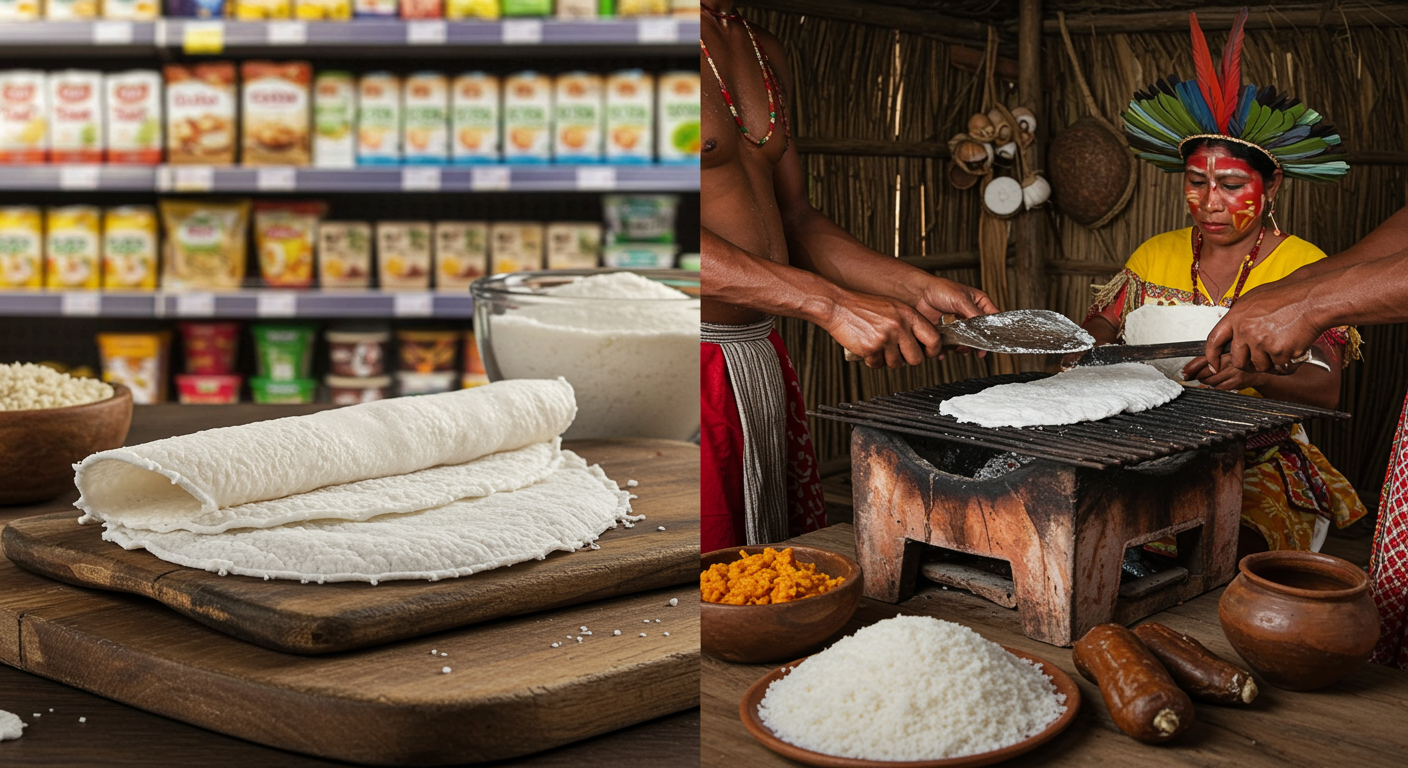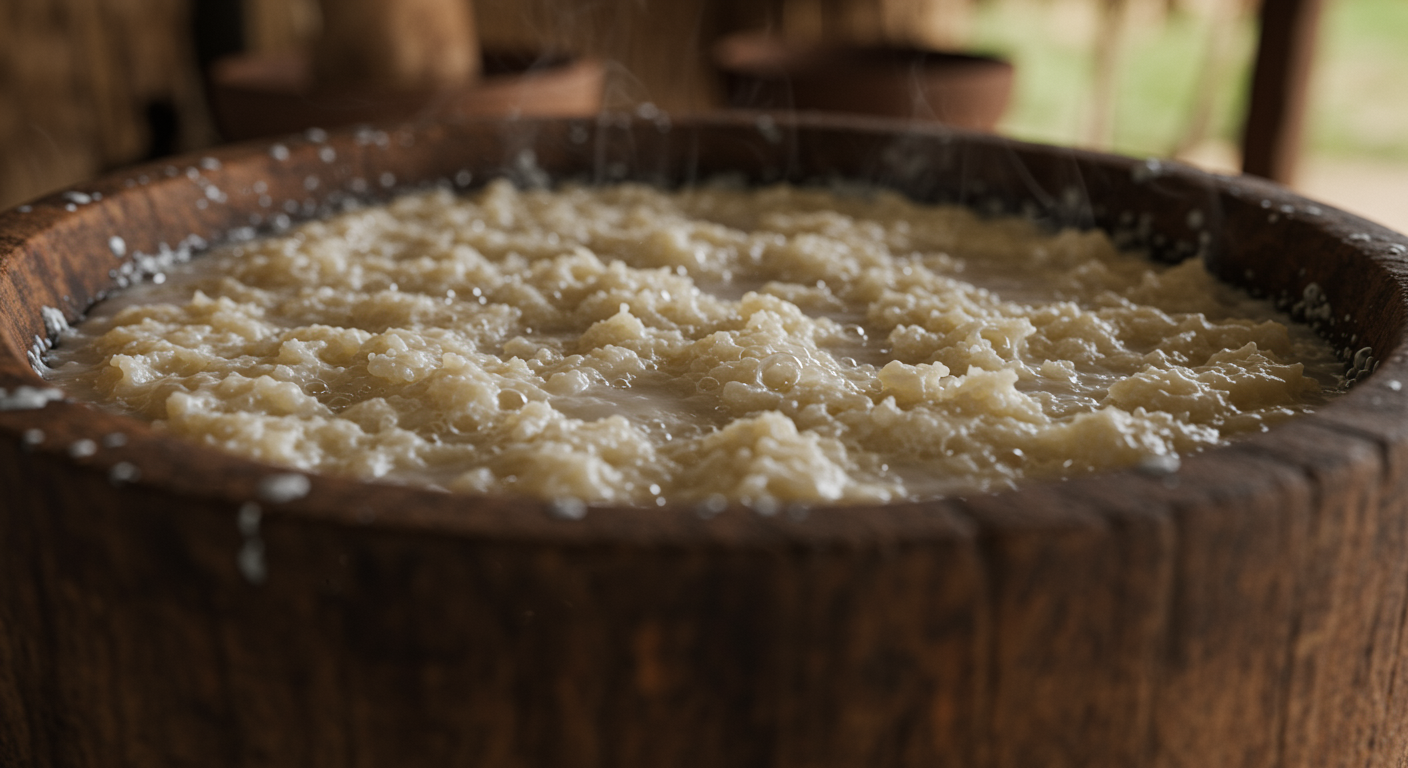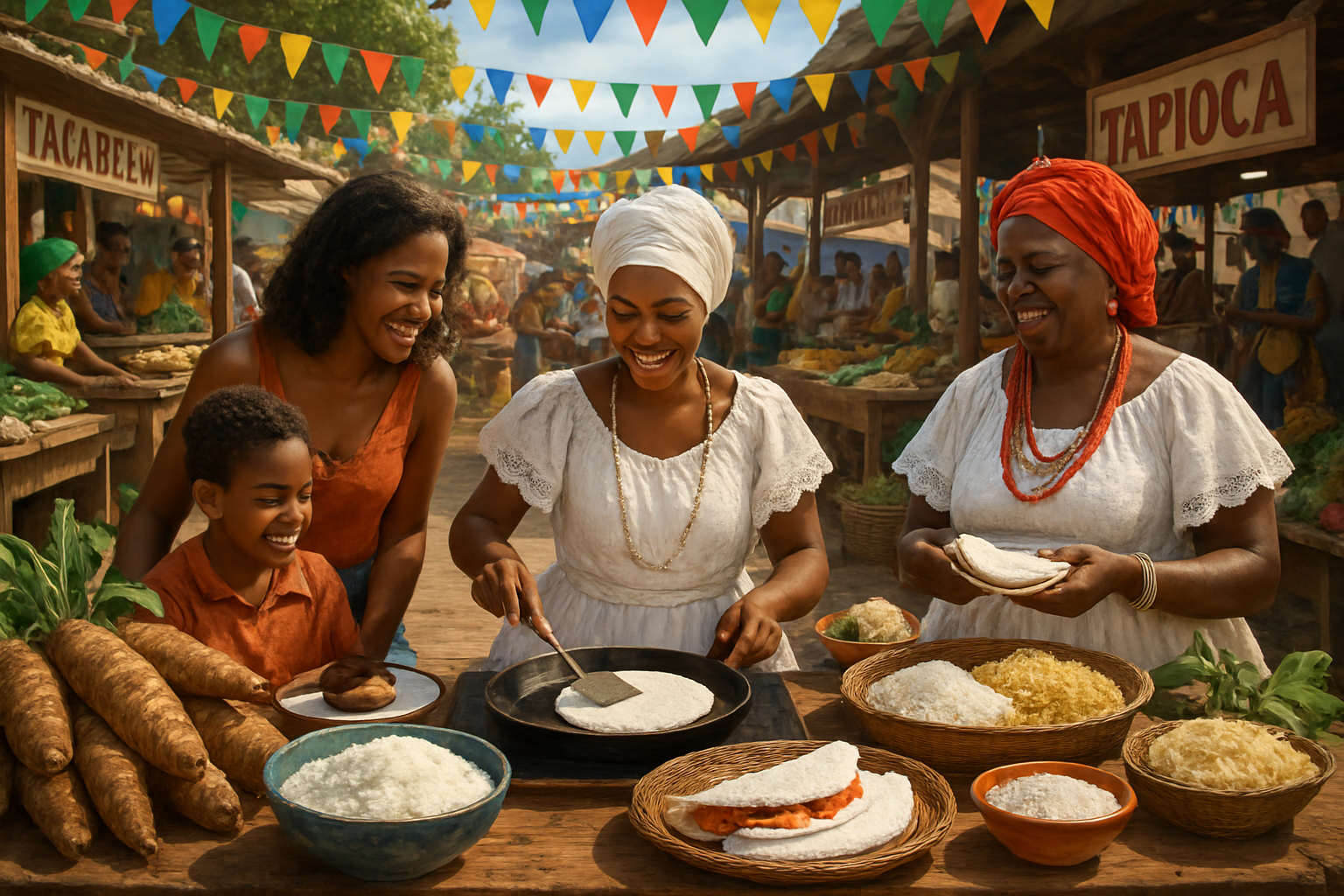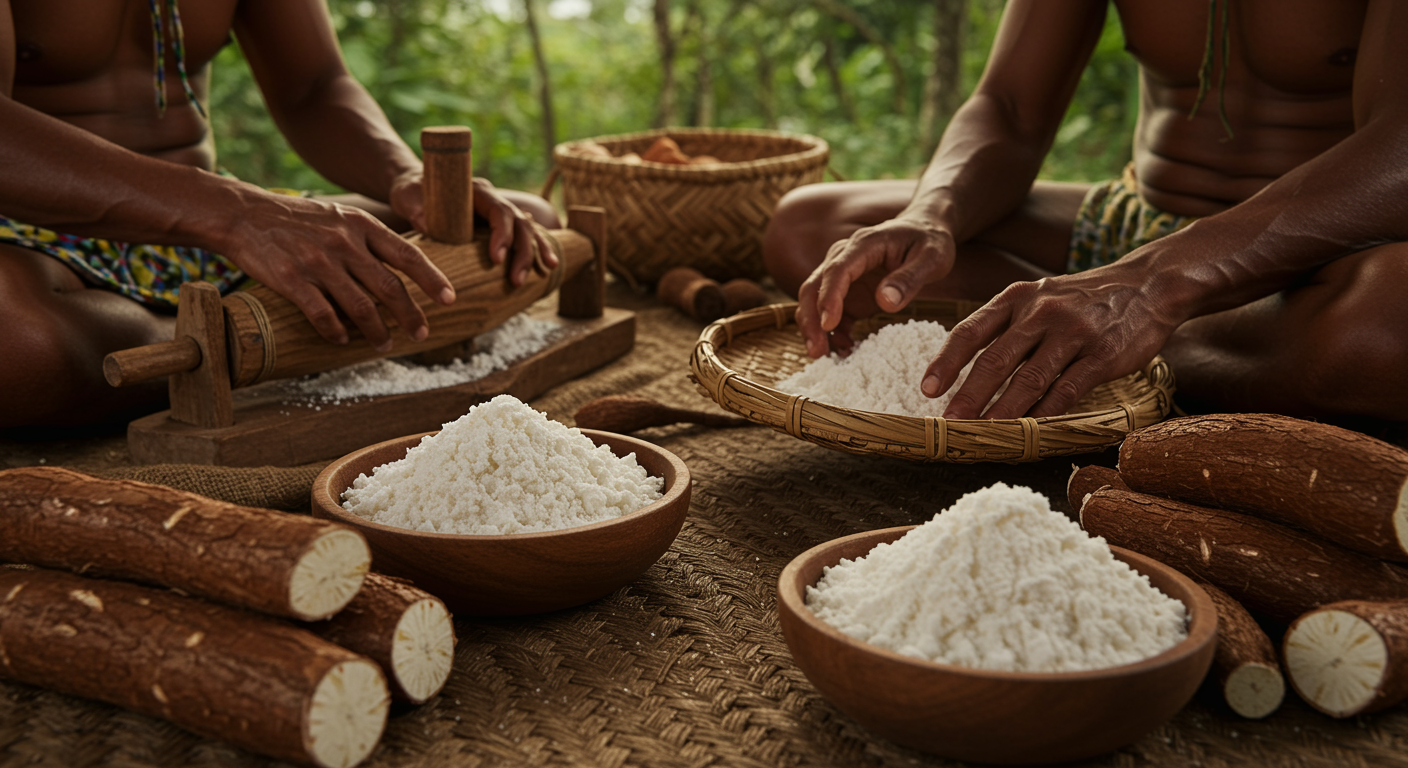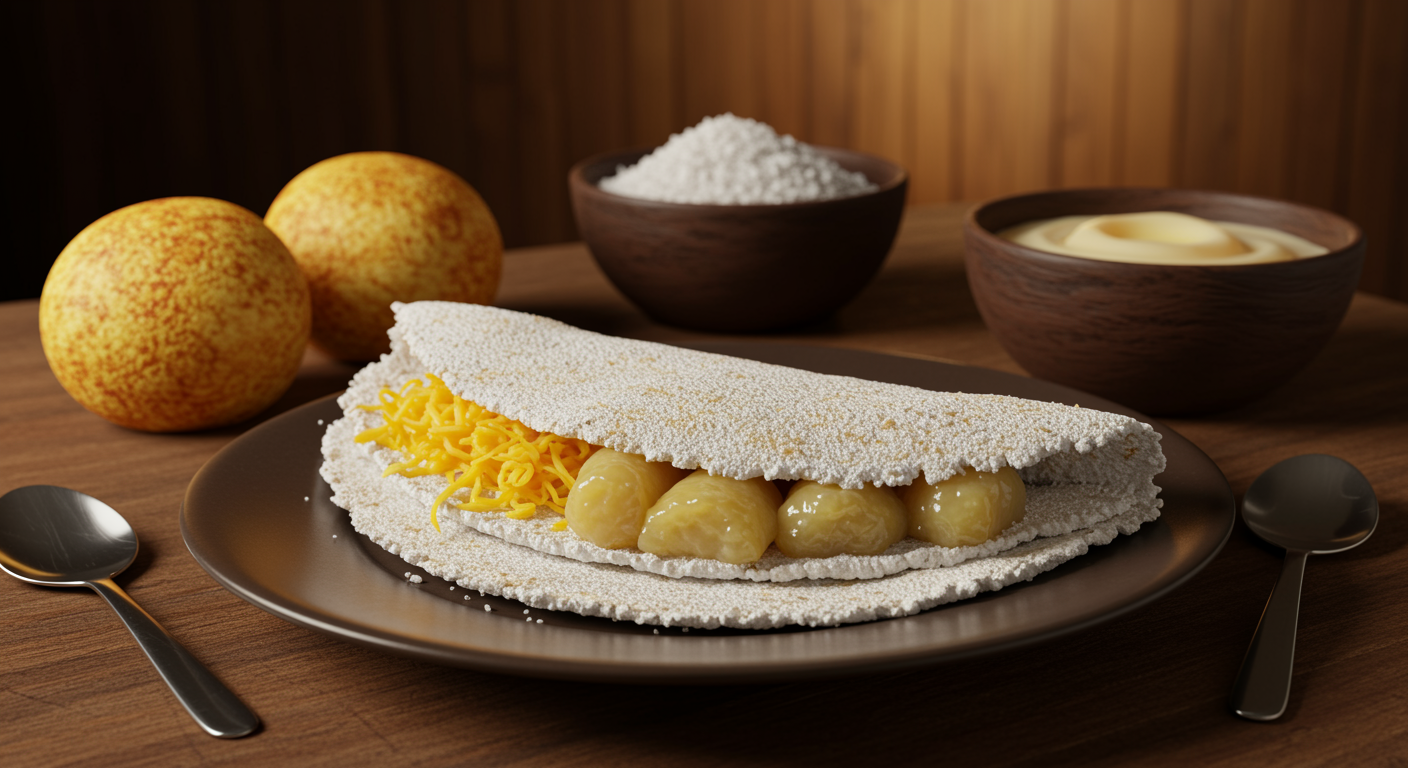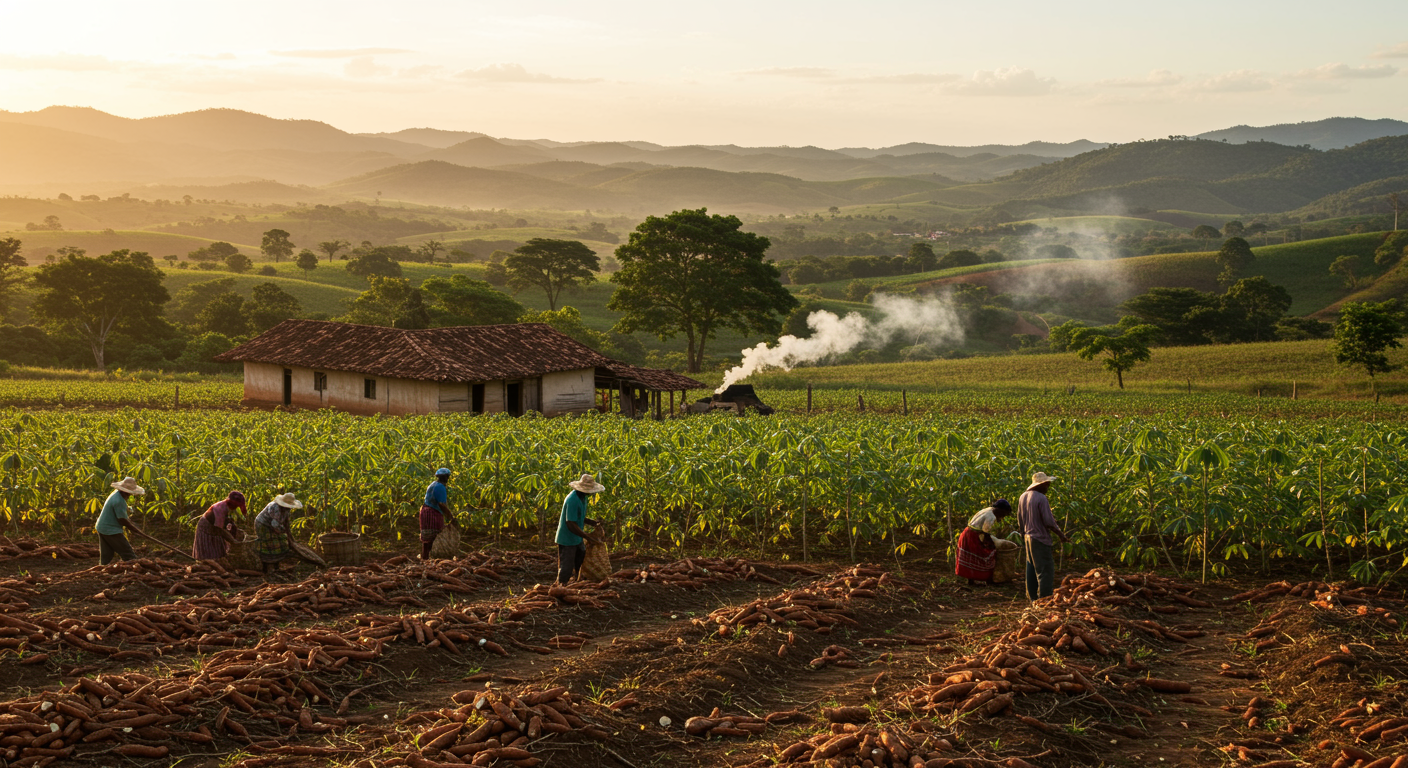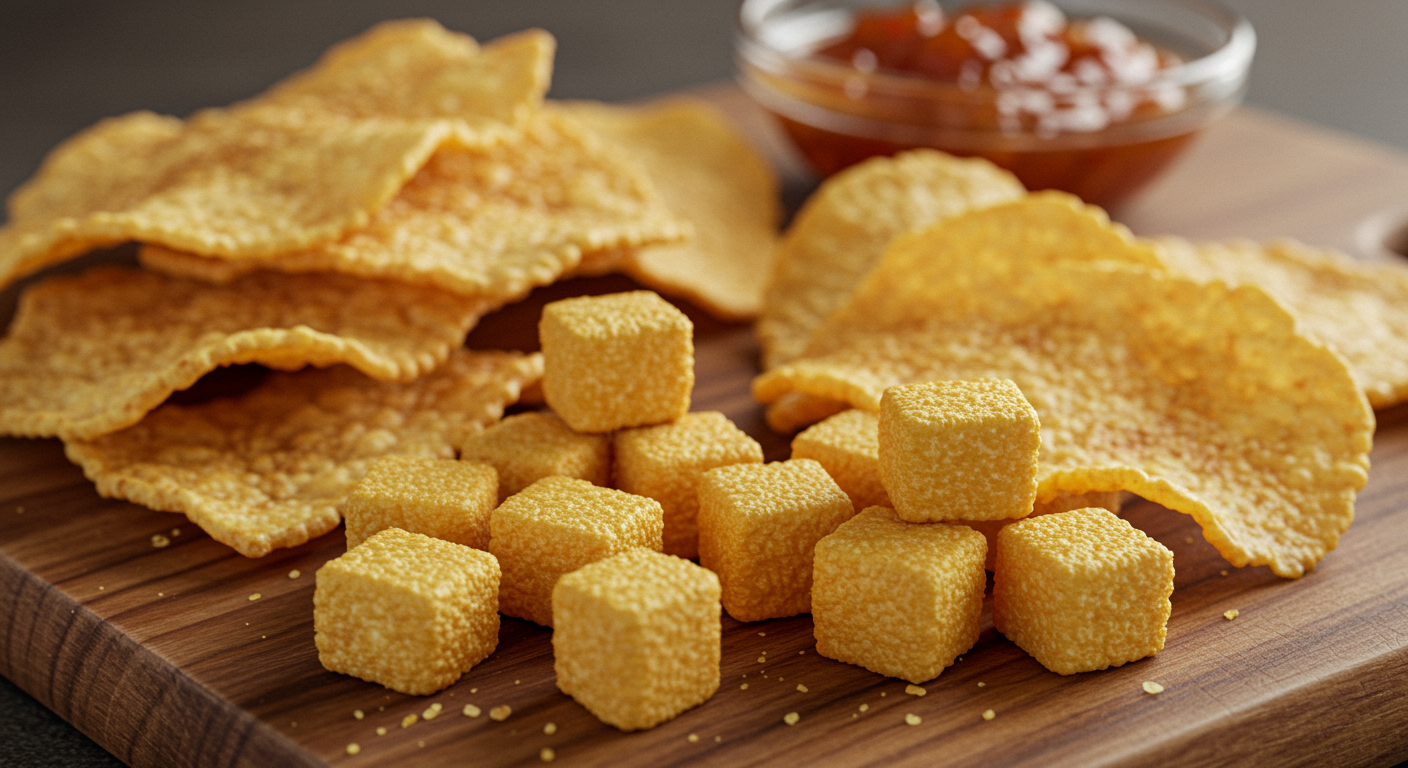Tapioca, a versatile and beloved staple in Brazilian cuisine, often finds itself at the center of various discussions, leading to a mix of myths and facts surrounding its origins, nutritional value, and culinary role. In Bahia, particularly its interior, where tapioca is deeply ingrained in daily life and cultural practices, these misconceptions can sometimes obscure the true understanding and appreciation of this remarkable food. This comprehensive exploration aims to debunk common myths, clarify scientific facts, and shed light on the authentic story of tapioca, allowing for a more informed perspective on its historical significance, health implications, and its enduring place in Bahian culture. By separating folklore from evidence, we foster a deeper, more accurate understanding of this culinary icon.
Myth 1: Tapioca is a Modern Health Food Trend
One of the most pervasive myths about tapioca, particularly in contemporary urban contexts and global markets, is that it is a relatively new health food trend, discovered and popularized in recent decades.
Fact: An Ancient Indigenous Staple with Millennia of History
Fact: Tapioca is anything but new. Its origins trace back thousands of years to the indigenous peoples of South America, who were the first to cultivate cassava (Manihot esculenta). In what is now Brazil, indigenous communities developed sophisticated techniques to process cassava, extracting its starch to create beiju, the precursor to modern tapioca. This food was a cornerstone of their diet, providing vital carbohydrates and sustenance long before European arrival. The processes for detoxifying bitter cassava and preparing its starch are ancient technologies, honed over millennia. In the interior of Bahia, tapioca has been a continuous staple, passed down through generations, rather than a recent discovery. Its “rediscovery” as a health food is a modern marketing phenomenon, not a historical reality. The true story is one of enduring tradition, not fleeting trendiness, rooted in deep ancestral experience and expertise.
Myth 2: Tapioca is Unhealthy Because it’s “Pure Carbohydrate”
Another common misconception, especially in diet-conscious circles, is that tapioca is devoid of nutrients and simply a source of “empty calories” due to its high carbohydrate content.
Fact: A Gluten-Free Energy Source with Specific Nutritional Benefits
Fact: While tapioca is indeed rich in carbohydrates, making it an excellent source of quick energy, it is not “unhealthy” per se, especially when consumed as part of a balanced diet. Its key nutritional benefits include:
- Naturally Gluten-Free: This is one of its most significant advantages, making it a safe and versatile alternative for individuals with celiac disease or gluten sensitivity.
- Good Source of Energy: Tapioca provides readily digestible carbohydrates, fueling daily activities and mental functions. For communities in the Bahian interior, it historically and currently provides essential energy for physical labor.
- Contains Essential Minerals (in smaller amounts): Depending on the processing and cassava variety, tapioca can offer trace amounts of iron, calcium, and magnesium. While not a primary source of these, it contributes to overall mineral intake.
- Easy to Digest: Its simple carbohydrate structure makes it gentle on the digestive system, often recommended for those with digestive sensitivities.
The idea that it’s “unhealthy” typically arises from comparing it to whole grains without considering its unique role and properties. In Bahian tradition, tapioca is rarely eaten alone; it’s often paired with protein-rich fillings like cheese, meat, or eggs, or with fruits, which enhances its nutritional profile and transforms it into a complete meal. The nutritional value should always be assessed within its traditional consumption context.
Myth 3: All Tapioca is the Same, Regardless of Origin or Preparation
Many consumers might assume that tapioca is a homogenous product, with little variation beyond its fillings.
Fact: Regional Diversity and Artisanal Nuances Dictate Quality and Flavor
Fact: This myth ignores the rich diversity inherent in tapioca production. In Bahia, particularly its interior, tapioca is far from a singular entity. Variations arise from several factors:
- Cassava Varieties: Different types of cassava plants (sweet vs. bitter) yield starches with distinct properties. Local farmers in Bahia cultivate specific varieties best suited for goma production, impacting texture and flavor.
- Processing Techniques: The artisanal process in traditional casas de farinha can vary. The degree of grating fineness, the efficiency of pressing (tipiti use), and the precise hydration of the starch all contribute to the final product. Some communities produce a finer, silkier goma, while others prefer a slightly coarser grain for a chewier tapioca.
- Terroir: The soil, climate, and agricultural practices of specific micro-regions within Bahia’s interior (e.g., sertão vs. recôncavo) impart subtle differences to the cassava and, consequently, to the tapioca. This “terroir” effect creates unique regional characteristics.
- Freshness and Hydration: The quality of goma hidratada is highly dependent on its freshness and correct moisture content. Industrially produced or poorly stored tapioca can lack the desired texture and flavor of fresh, artisanal goma.
This regional diversity is a testament to the deep-seated expertise and traditional knowledge of Bahian communities, making each tapioca experience a unique reflection of its specific origin and preparation. The authenticity derived from these processes contributes significantly to the trustworthiness of the product.
Myth 4: Tapioca is a Relatively Simple Food with Limited Culinary Use
Some might perceive tapioca as a basic, almost rudimentary food, only suitable for simple flatbreads.
Fact: A Highly Versatile Ingredient with Diverse Culinary Applications
Fact: Tapioca’s culinary versatility is one of its most remarkable attributes, defying the notion of limited use. While the flatbread is its most iconic form, tapioca starch is a foundational ingredient in a vast array of dishes across Bahia and Brazil:
- Flatbreads (Beiju/Tapioca): The classic, served with countless sweet and savory fillings, from traditional queijo coalho and carne de sol to modern gourmet combinations.
- Desserts: Polvilho doce (sweet cassava starch) and goma hidratada are used in decadent desserts like bolo de tapioca (no-bake cake), pudim de tapioca (tapioca pudding), and mingau de tapioca (tapioca porridge).
- Savory Snacks: Polvilho azedo (sour cassava starch) is famous for pão de queijo (cheese bread) in other regions, and tapioca starch is also used in various fried snacks (salgados), adding unique texture and chewiness.
- Thickening Agent: Its neutral flavor and gelatinous properties make tapioca starch an excellent thickener for soups, stews, and sauces, particularly in gluten-free cooking.
- Breads and Pastries: Tapioca flour can be incorporated into gluten-free breads, biscuits, and other baked goods, offering an alternative to wheat flour.
This extensive range of applications showcases tapioca’s adaptability and its integral role in both traditional and innovative Bahian culinary practices, demonstrating its widespread utility and the cultural authority it holds in the kitchen.
Myth 5: Tapioca Production is a Low-Tech, Backward Process
The image of artisanal tapioca production in remote rural areas might lead some to believe it is an inefficient or outdated process.
Fact: A Sophisticated, Sustainable System Blending Tradition with Modernity
Fact: While traditional, the artisanal production of tapioca goma in the Bahian sertão is a sophisticated and highly efficient system, meticulously developed over centuries. Far from being “backward,” it often embodies principles of sustainability and community engagement that are highly valued today:
- Ingenious Tools: Indigenous inventions like the tipiti (woven press) are examples of advanced mechanical engineering for detoxification and dewatering. Traditional graters and sieves are perfectly designed for their purpose.
- Resourcefulness: The entire cassava plant is utilized, minimizing waste. For example, the manipueira (toxic liquid) from bitter cassava can be processed into tucupi.
- Sustainable Practices: Many small-scale farmers in Bahia practice organic cultivation, respecting the soil and local ecosystems. This leads to high-quality, authentic products.
- Community Collaboration: The casas de farinha are hubs of communal labor, fostering knowledge transfer, social cohesion, and economic solidarity. This collective effort ensures efficiency and preserves expertise.
- Integration of Modernity: While respecting tradition, many casas de farinha judiciously incorporate small-scale modern machinery (e.g., electric graters, hydraulic presses) to enhance efficiency without compromising artisanal quality.
This blend of ancestral wisdom and pragmatic adaptation demonstrates a high level of expertise and operational scalability, ensuring the continuous production of high-quality tapioca, which is essential for its long-term viability and contribution to the rural economy. The trustworthiness of the product is built on these time-tested processes.
Myth 6: Tapioca is Exclusively a Brazilian Food
Some may consider tapioca to be a food unique to Brazil, unaware of its global presence.
Fact: A Global Staple with Diverse Cultural Manifestations
Fact: While tapioca is a quintessential Brazilian food, cassava and its starch derivatives are consumed worldwide, especially in tropical regions. Cassava originated in South America, but it was spread to Africa and Asia by Portuguese traders during the colonial era, where it became a crucial food crop.
- Africa: Cassava is a primary staple, processed into various forms like fufu, garri, and ugali.
- Asia: Used in popular street foods (e.g., boba tea pearls, tapioca cakes) and as a thickening agent.
- Caribbean: Features in various dishes, including cassava bread and puddings.
This global presence highlights the extraordinary adaptability of cassava and its starch, demonstrating how an indigenous South American plant became a staple for billions worldwide. While Bahian tapioca has its unique cultural identity, it is part of a larger global narrative of cassava’s impact on food security and culinary traditions.
Myth 7: All Cassava Flour is Tapioca Flour
The terms “cassava flour” and “tapioca flour” are sometimes used interchangeably, leading to confusion.
Fact: Distinct Products with Different Processing and Uses
Fact: While both derive from the cassava root, cassava flour and tapioca flour (or starch) are distinct products with different processing methods and culinary properties:
- Cassava Flour (Farinha de Mandioca): Made from the entire cassava root (peeled, grated, pressed, and often toasted). It retains fiber and a slightly coarser texture. It’s used for farofa, and as a side dish or thickener in stews.
- Tapioca Starch (Goma or Polvilho): Pure starch extracted from the cassava root. The pulp is washed to separate the starch, which is then dried. It is a fine, white powder (polvilho) or hydrated granular form (goma hidratada). It’s used for the classic tapioca flatbread, puddings, and as a gluten-free thickener.
The key difference is that cassava flour uses the whole root (minus peel), while tapioca starch is the purified starch component. Understanding this distinction is crucial for correct culinary application and appreciating the specialized processing involved in each.
Table 1: Tapioca Myths vs. Facts – A Clarification
| Myth | Fact | Core Cultural / Nutritional Insight |
|---|---|---|
| Modern Health Food Trend | Ancient indigenous staple, millennia of history in South America. | Deep ancestral knowledge, enduring tradition, not a recent discovery. |
| Unhealthy “Empty Carbohydrate” | Gluten-free energy source, easy to digest, complements balanced diets. | Essential energy for communities, enhances nutrition when paired with traditional fillings. |
| All Tapioca is the Same | Rich regional diversity in cassava varieties and artisanal processing techniques. | Unique textures and flavors based on Bahian terroir and generational expertise. |
| Limited Culinary Use | Highly versatile: flatbreads, desserts, savory snacks, thickeners, gluten-free baking. | Integral to both traditional and innovative Bahian cuisine, demonstrating wide adaptability. |
| Low-Tech, Backward Production | Sophisticated artisanal system, blending ancestral ingenuity with sustainable practices. | Ingenious tools (tipiti), communal labor, efficient resource use, a blend of tradition and pragmatic adaptation. |
| Exclusively Brazilian Food | Global staple, widely consumed in Africa, Asia, and Caribbean in various forms. | Part of a broader global narrative of cassava’s impact on food security and culinary traditions. |
| Cassava Flour = Tapioca Flour | Distinct products: cassava flour uses whole root; tapioca flour (starch) is purified starch. | Different processing, distinct culinary properties, crucial for correct usage in Bahian dishes. |
The Trustworthiness of Tradition: Why Debunking Matters
Debunking these common myths about tapioca is not just an academic exercise; it’s vital for preserving the integrity and trustworthiness of this food, especially for the communities in Bahia’s interior who are its custodians. Misconceptions can devalue traditional knowledge, misrepresent the product’s benefits, and undermine the efforts of small-scale producers.
By presenting accurate facts rooted in historical and scientific understanding, we reinforce the genuine value of tapioca. We highlight the unparalleled experience and expertise of indigenous and Bahian communities in cassava cultivation and processing, and the authority that their long-standing traditions command. This commitment to truth ensures that tapioca is appreciated for what it truly is: a remarkable, historically rich, and nutritionally valuable food, a testament to cultural resilience and culinary ingenuity. This clarity is paramount for consumers and for maintaining the product’s strong identity in the market.
Promoting Informed Consumption
An informed consumer base is more likely to appreciate the nuances of artisanal tapioca, understand its cultural context, and support the producers who adhere to traditional, sustainable methods. This fosters a more conscious consumption culture, where food choices are guided by knowledge rather than misinformation, contributing to the long-term vitality of Bahian tapioca and its communities. It reinforces the value of authentic products.
Checklist: Key Takeaways for Tapioca Understanding
- Ancient Roots: Recognize tapioca’s deep indigenous history.
- Nutritional Context: Understand its role as an energy source, especially gluten-free.
- Bahian Diversity: Appreciate regional variations and artisanal quality.
- Culinary Adaptability: Explore its wide range of uses beyond flatbreads.
- Sophisticated Process: Value the ingenuity in traditional production methods.
- Global Reach: Acknowledge its importance as a staple worldwide.
- Product Distinction: Differentiate between cassava flour and tapioca starch.
- Value of Authenticity: Support traditional methods and informed consumption.
By embracing the facts and celebrating the true story of tapioca, we honor its enduring legacy in Bahia and beyond, ensuring its rightful place as a celebrated and well-understood culinary treasure.

